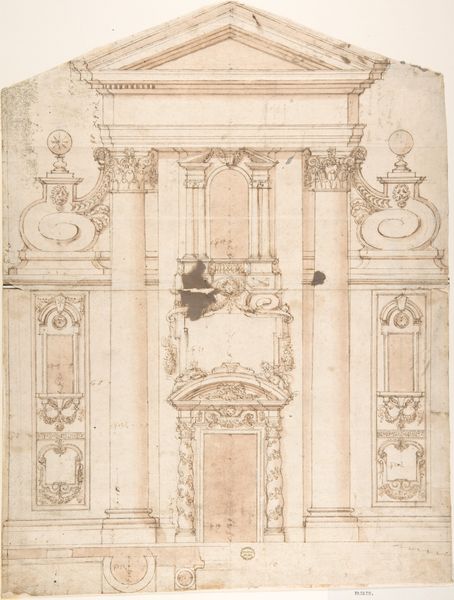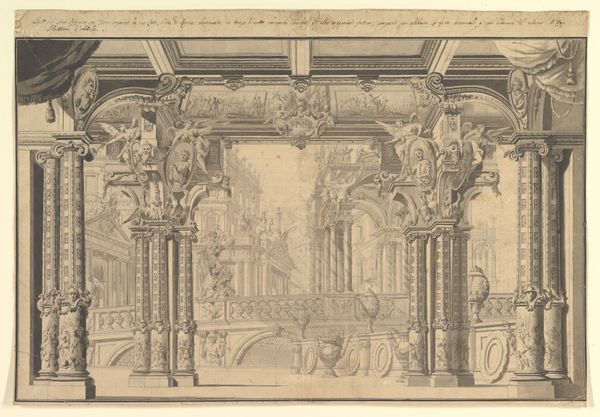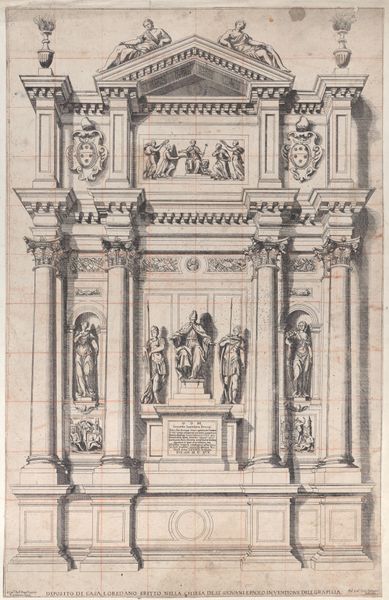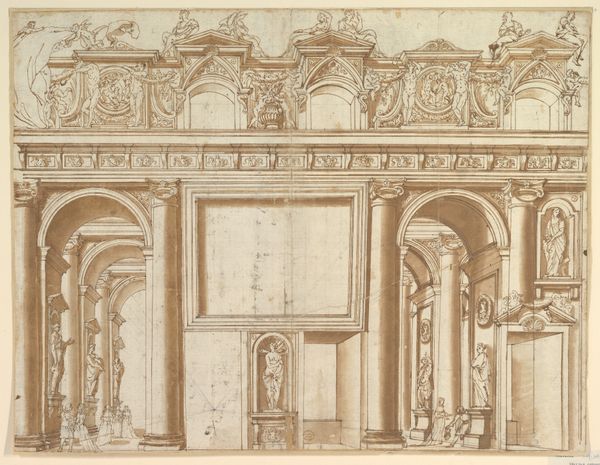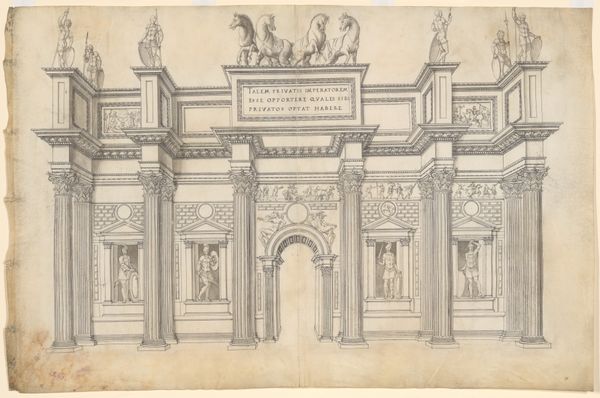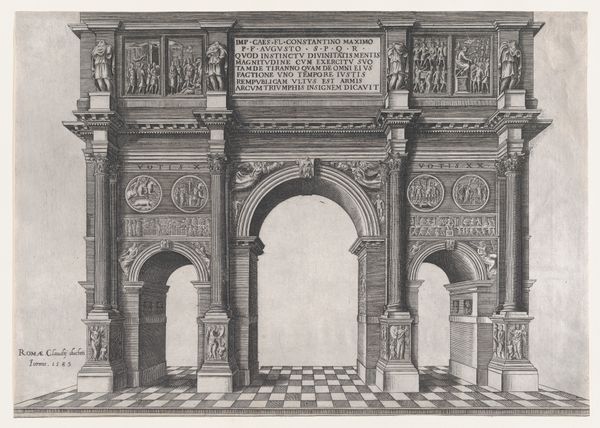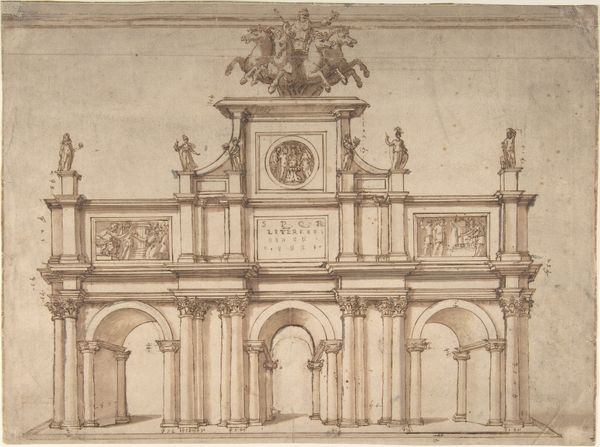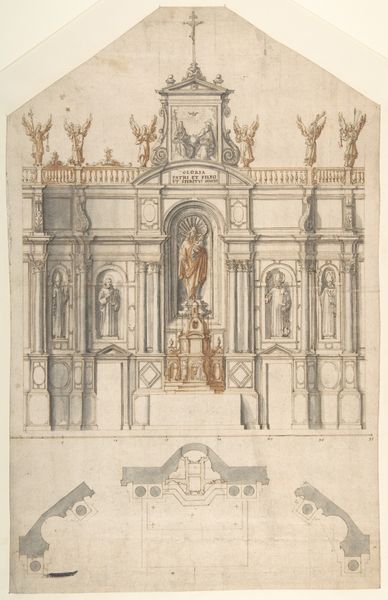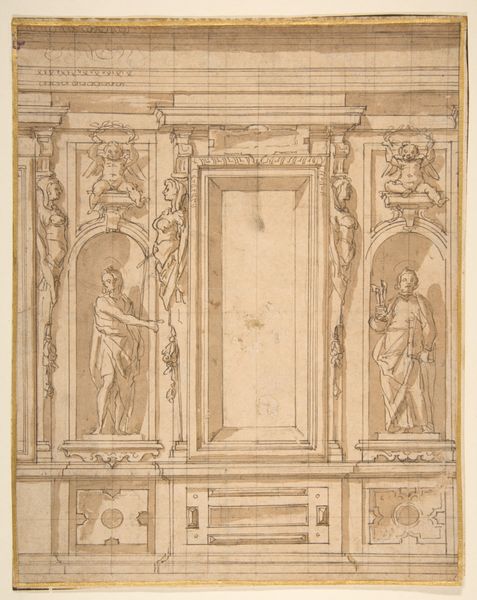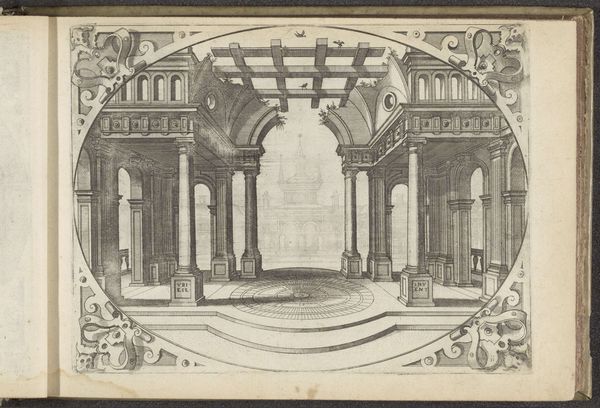
drawing, print, etching, architecture
#
drawing
#
baroque
# print
#
etching
#
history-painting
#
architecture
Dimensions: 13 11/16 x 18 1/16 in. (34.8 x 45.9 cm)
Copyright: Public Domain
Editor: Here we have Jan Goeree's "View of the Arch of Constantine," made between 1690 and 1704, a drawing with etching and printmaking. I’m struck by how Goeree captures the grandeur, yet the sepia tones and sketched style lend a feeling of distance and history. How do you see this work, beyond its representational qualities? Curator: Beyond the arch's function as a historical record, I see a dialogue on power and its representation. The Arch of Constantine was, and remains, a statement of imperial dominance. Goeree's etching, produced centuries later, prompts questions: Whose history are we viewing? And how does its representation impact our understanding of power dynamics? Editor: That makes sense. I suppose it's easy to see this just as a picture of an old monument, but there's so much more going on with its meaning over time. Does the medium—a print—change how we should interpret its politics? Curator: Absolutely. The print medium allows for wider distribution, thus democratizing the image of power. But, simultaneously, it subtly shifts the narrative. Consider who had access to prints then versus now. Who controlled their production and dissemination? Examining these access points unravels complex social and economic power structures embedded in the image. This isn’t just a historical record; it’s a carefully constructed narrative shaped by specific social and political agendas. Editor: So, it's like a constant game of telephone through history, with each reproduction adding a layer of meaning and interpretation. Thanks, that’s incredibly helpful in contextualizing the work. Curator: Precisely! It pushes us to critically examine what the artist and patrons aimed to communicate, and how that communication has evolved and been reinterpreted over centuries through societal changes and technological advancements in image reproduction.
Comments
No comments
Be the first to comment and join the conversation on the ultimate creative platform.


